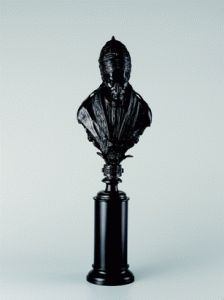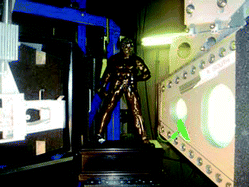This study by R. van Langh and co-workers adds analytical data to the debate on whether bronze sculptures could have been cast with such a precision that no after-work was required. The study focuses on chasing, a technique based on flattening the surface using a hammer and iron chasing tool; it is applied on each bronze after it has been cast and is removed from the mould.
In the past these bronzes have always been considered as cast and chased, but during a careful study of Renaissance bronzes in the collection of the Rijksmuseum, two bronzes clearly distinguished themselves. On both Hercules Pomarius by Willem van Tetrode and Bastiano Torrigiani’s sculpture Bust of Pope Gregory XIV, flashes of metal were found on the outer surface of the bronze leading to the hypothesis that a bronze statuette could have been cast in the 16th century with such precision that no chasing of the surface had to take place. The aim of this research was to point out the characteristic “strain fingerprints” left in the bronze by the chasing process, which are absent in an “as cast” specimen: the use of Time of Flight Neutron Diffraction for this purpose is a novel application.
The team compared Hercules Pomarius and Bust of Pope Gregory XIV with the undoubtedly cast and chased Severo Calzetta da Ravenna’s bronze statuette depicting Paris, as well as two specifically manufactured reference samples, one cast and chased, the other cast and unfinished. They demonstrated that both the Bust of Pope Gregory XIV and Hercules Pomarius were cast and not chased and Paris was cast and chased.
This article will be published later in the year as part of a themed issue on Art & Archaeometry.
Interested in knowing more? Read the article for free until March 1st!
Casting technology of Renaissance bronze statuettes: the use of TOF-neutron diffraction for studying afterwork of Renaissance casting techniques
R. van Langh, L. Bartoli, J. Santisteban and D. Visser
J. Anal. At. Spectrom., 2011, Advance Article
DOI: 10.1039/C0JA00235F













